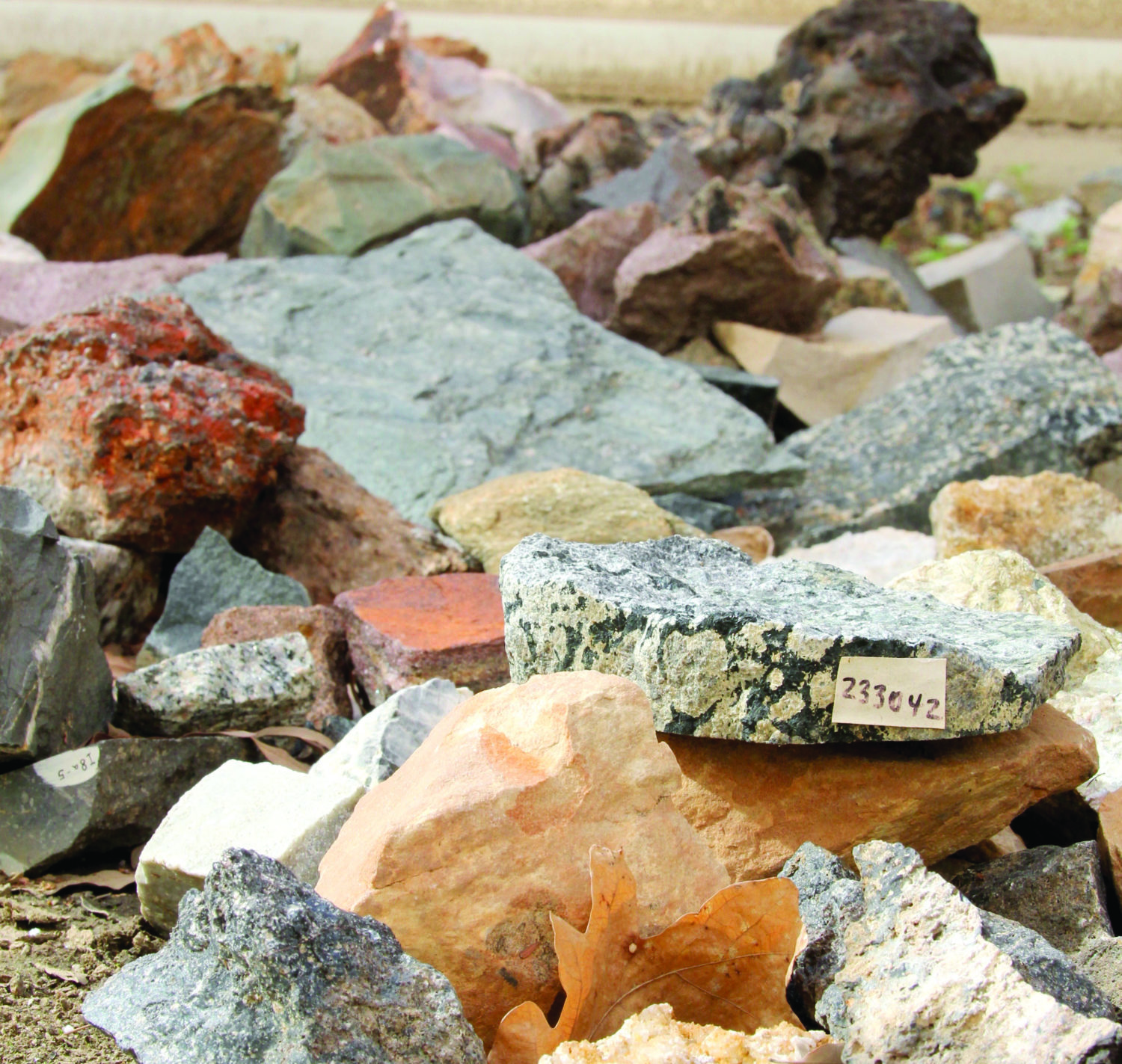
Last year, Georgia State’s oldest building and home of geosciences, Kell Hall, was set for demolition. The entirety of the Geology Department: all the rocks, chemicals and equipment must be relocated. So, how would over seven floors of history and 10,000 pounds of rocks from all over the world be moved?
The Ph.D. student responsible for the move, R. Kirn, has the answer.
“A staircase,” he said.
Kirn estimated that Kell at its prime hosted more than 10,000 pounds of rock. Whether it be tiny vials of minerals or giant slabs of granite, the clock started ticking before all of these rocks from all over the world would be reduced to rubble.
“We were supposed to move everything and I’m looking around like man, there are millions of pounds of rocks. It’s ridiculous,” Kirk said. “We have to have every single rock to teach. [Moving] it was all summer probably 9 to 5 every day, Monday through Friday. Some of the rocks are at least 100 pounds. It was crazy.”
While Georgia State utilized movers, Kirk said that it was only for about five crates each weighing around 20 pounds. The heavier rocks, such as the slabs of granite, were set to be left behind, but Kirk couldn’t let them go and instead, rounded up friends to help him move them.
“The heaviest ones, we actually moved ourselves. One of the rocks, if you dropped it, your fingers would be flattened,” he said. “The real hard part [isn’t taking] it down off something, but putting it back up on something, I had to put rocks up on shelves and that’s pretty dangerous. I can’t believe no one got hurt.”
Because these rocks and minerals have been stored away in various labs for so long, he often would open up boxes in which he didn’t know what was inside, sometimes coming nose-to-nose with toxic chemicals such as asbestos and other radioactive elements.
“I was like opening vials of asbestos and being like ‘oh my god’ and closing them up. The samples were so old, no one even knew,” he said. “[I found] a bunch of uranium, radioactive rocks, stuff that was in bags that had a skull and crossbones on it. So that was cool.”
Kirk started his undergrad at Georgia State in 2009 and joined the geology department in 2013. He completed both his undergrad and masters at Georgia State and is currently working on his PhD. He said that through all his time at Georgia State, he’s become quite recognized and immediately took on the job.
“I’ve been around so long, that I kind of do stuff on my own. I’ve known where all the rocks are and stuff, forever. I eventually had all the keys,” he said. “I’d rather move it myself and get an inventory. It’s to help myself be able to teach better.”
Even though he was compensated, however small that was, he said that he enjoyed it and it ultimately helped him know the rocks for the classes he teaches in the future.
“Its understated how much you learn from just simply figuring out what it’s called, making a tag and putting it in a case. I would have done it for free,” Kirk said.
Because saying goodbye to some of the rocks was so difficult, today, you can find the remains of Kirk’s work as the “rock garden” located under Sparks Hall in a side courtyard off of Gilmer. If you spot a few massive piles of rocks, you’ve made it.
“It was terrible because it was like, ‘Man, everything is great.’ Who would want to get rid of a rock that someone got in 1973?” he said. “We made a rock garden on campus but it’s not organized yet. It just looks like a bomb went off. I’ll have to go back there with some friends and fix that up later.”
